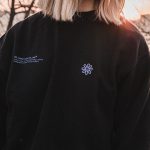
High Fashion Clothing Items
Clothing objects worn around the human body. Generally, clothing consists of textiles or other soft materials, but in modern times it’s also includes non-textile clothing made of animal skins and other soft sheets of natural products and materials found in nature, mixed together. The object of wearing clothing may vary greatly from culture to culture, as well as season to season, and while some cultures view clothing differently, all humans look favourably upon clothing as a practical way to keep warm and dry. Some cultures value certain types of clothing more than others, though.
Some cultures wear very little clothing, except for what they would need for going out. This is not because they find it difficult to get by, since clothing is easy to wear and requires little work. It is rather because they find it uncomfortable to sit in the sun for extended periods of time without protection. A wealthy merchant would not often wear a kilt, for example, if he travelled on horseback through the desert. In these circumstances, clothing would be easy to lose, and wool was an ideal material for protection.
Some people, however, must dress much more formally than merchants and wealthy individuals. If they need to travel to other lands, they will likely wear clothing that matches the culture they are visiting. For example, a cowboy who is touring the western US might want to wear leathers and plaids instead of spandex. This shows respect for the land and provides a unique kind of comfort as one walks from camp to camp. Western men often wore their shirts open in front, showing their large collars, and trousers, loose in the back so that their long boots, which were almost always attached to their boots, show off their big waist.
Aspects of clothing related to function have changed a lot over the centuries. Clothes are designed to keep people warm and dry, so that they do not get sick or uncomfortable. Historically, wool was the most commonly used fabric, as it was easy to obtain and used for clothing because it grew quickly, resulting in clothing that was very fashionable. Nowadays, cotton and synthetic fabrics are used in much greater quantities, due to the cheap price of natural fiber, which was available to ordinary people.
Cotton clothing used to be considered uncomfortable and scratchy, since it took a lot of time to produce. The main problem was that cotton cloth itself was difficult to work with. When the process of production became automated, people could afford more comfortable materials, such as silk. Silk was very expensive at the time, and it took many days to weave a thread that large enough to make a sweater. Silk, along with other new synthetic fabrics, gradually took over the entire clothing industry.
Much later, cloth diapers and clothing were made by machine. A diaper can easily pass for a baby doll, which was a much cheaper alternative. As the industrial revolution spread across the world, the process for manufacturing clothing became even more standardized, and the boundaries between clothing types began to blur. People started making dresses, caps, suits, coats, sweaters, socks, gloves, and helmets for all kinds of purposes. Different colors, sizes, and shapes of clothing soon became available for every need.
Clothing is now more flexible than ever before. One person’s wardrobe is likely to consist of different items, depending on their needs. Some people wear skirts and shirts to work, while others may wear pants to school. There are also formal and informal styles of clothes, depending on the type of job, and other factors. Thus, a wardrobe will include a lot of accessories.
Silk, rayon, cotton, nylon, and other synthetic fabrics have made it easier and cheaper for manufacturers to produce high fashion clothing items. They are easier to work with, and are usually machine-washable. Silk is often made into clothing in patterns using silk embroidery machines. Monogramming is done with silk embroidery machines, as well. High fashion clothing items made from silk include evening gowns, silk lingerie, silk chemises, and silk pajamas.



